In partnership with MiCodmc, a selection of establishments ripe for discovery during the 63rd edition of the Salone del Mobile.Milano, from 8th to 13th April
Judd House: the quest for emptiness takes in Lower Manhattan
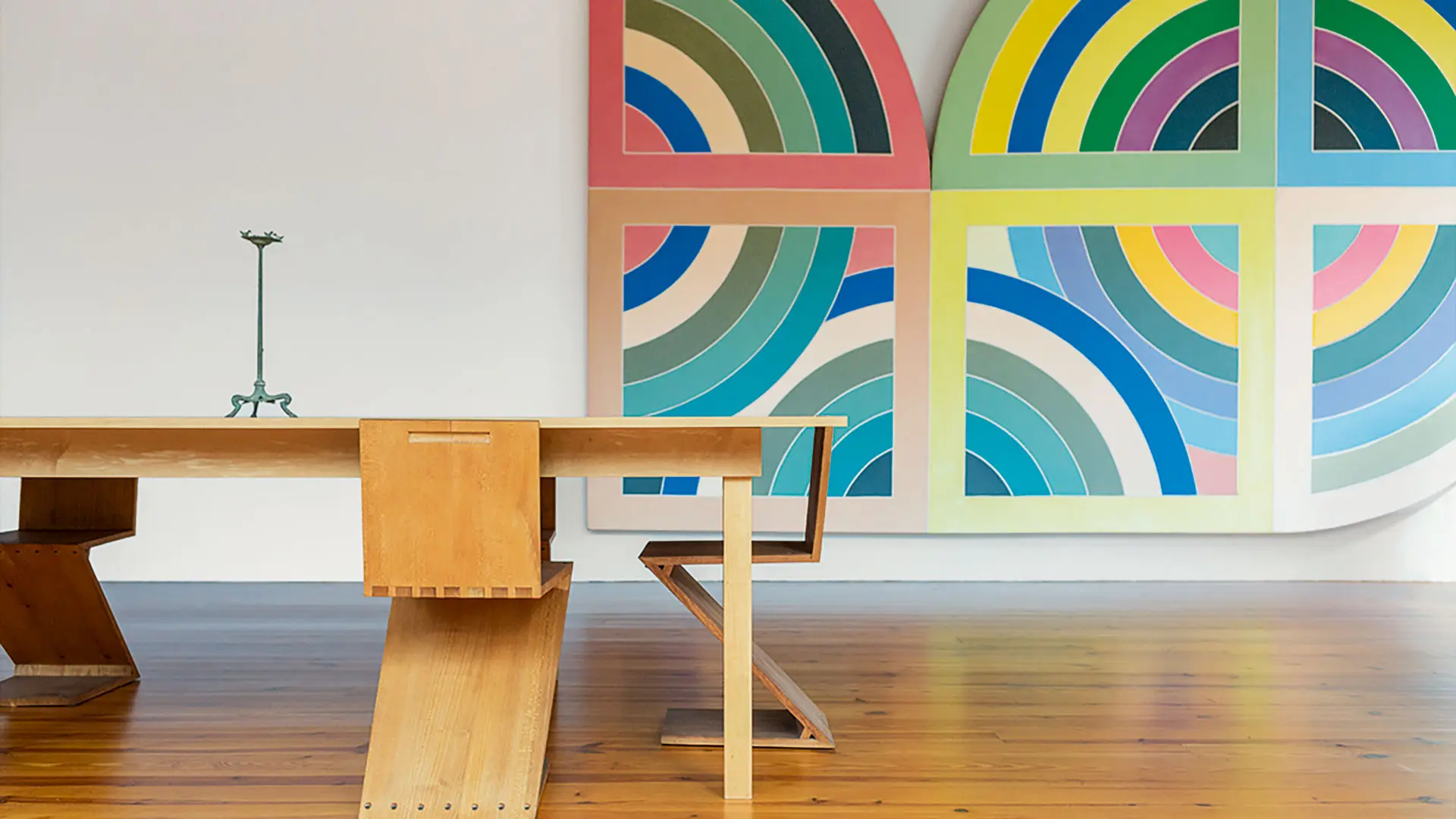
Frank Stella, Gur II, 1967 with table by Donald Judd and chairs by Gerrit Rietveld, 4th floor, 101 Spring Street, Judd Foundation, New York. Photo Brian Ferry © Judd Foundation.
In 2010 the Judd Foundation embarked on the restoration of one of the most extraordinary artists’ houses on American soil, which was completed in 2013 when the house was opened to the public. It is a museum, a project for extraordinarily elegant interiors, and a critical, watershed statement on the concept of installation.
Donald Judd (1929-1994) was a reluctant forerunner of Minimalism, having always abjured the bracketing of individual practices under a single heading. However, it’s fair to say that he was one of the most significant artists of the last century, and one of the most recognisable, as his work was notable for its unbroken lines (firstly boxes and parallelipeds in plywood or metal, reimagined functional objects and then the great architectural works in Corten steel) eschewing subjectivity in favour of the mimesis of industrial production. This placed him in an equally influential position vis-à-vis art, architecture and design. Judd’s contemplation of the desert nurtured the Zen principle of subtraction, of vanishing and of emptiness, which remained as obsession throughout his life, so much so that he chose to make some of his early artist homes in Marfa, Texas.
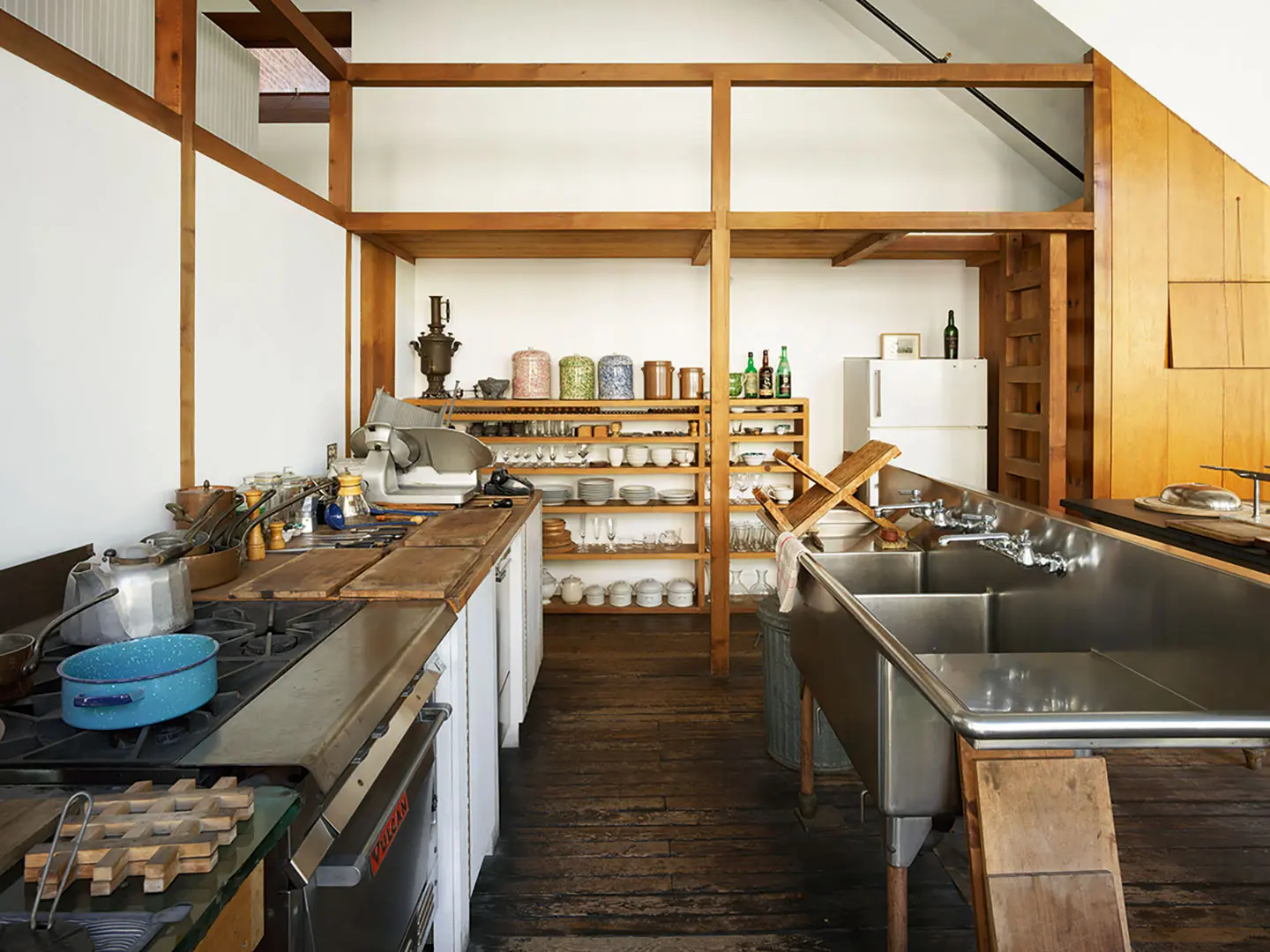
Kitchen, 2nd floor, 101 Spring Street, Judd Foundation, New York. Photo Matthew Millman © Judd Foundation.
In November 1968, when Lower Manhattan was still an adventurous, run-down area, teeming with creativity of all kinds, Judd purchased a cast-iron building hundreds of kilometres from the nearest desert. Designed by Nicholas Whyte and built in 1870 in the middle of the SoHo-Cast Iron District, it was originally intended for industrial and commercial use by the textile industry. It underwent a radical overhaul because, when Judd took possession of the building it was in a parlous state, overflowing with trash, to such an extent that “Arman could have bought the building and left it alone.” Judd embarked on its restoration, determined to preserve its formal and functional specifications. He kept the open spaces, added no dividing walls, instead attempting to free the lines and allow the original characteristics, such as the decorative cast-iron features, to re-emerge. There are five floors, each earmarked for one of the fundamental missions: "sleeping, eating, working." Its final purpose came as a result of all this, when the house at 101 Spring Street was acquired to serve as an exhibition space in line with the artist’s philosophy.
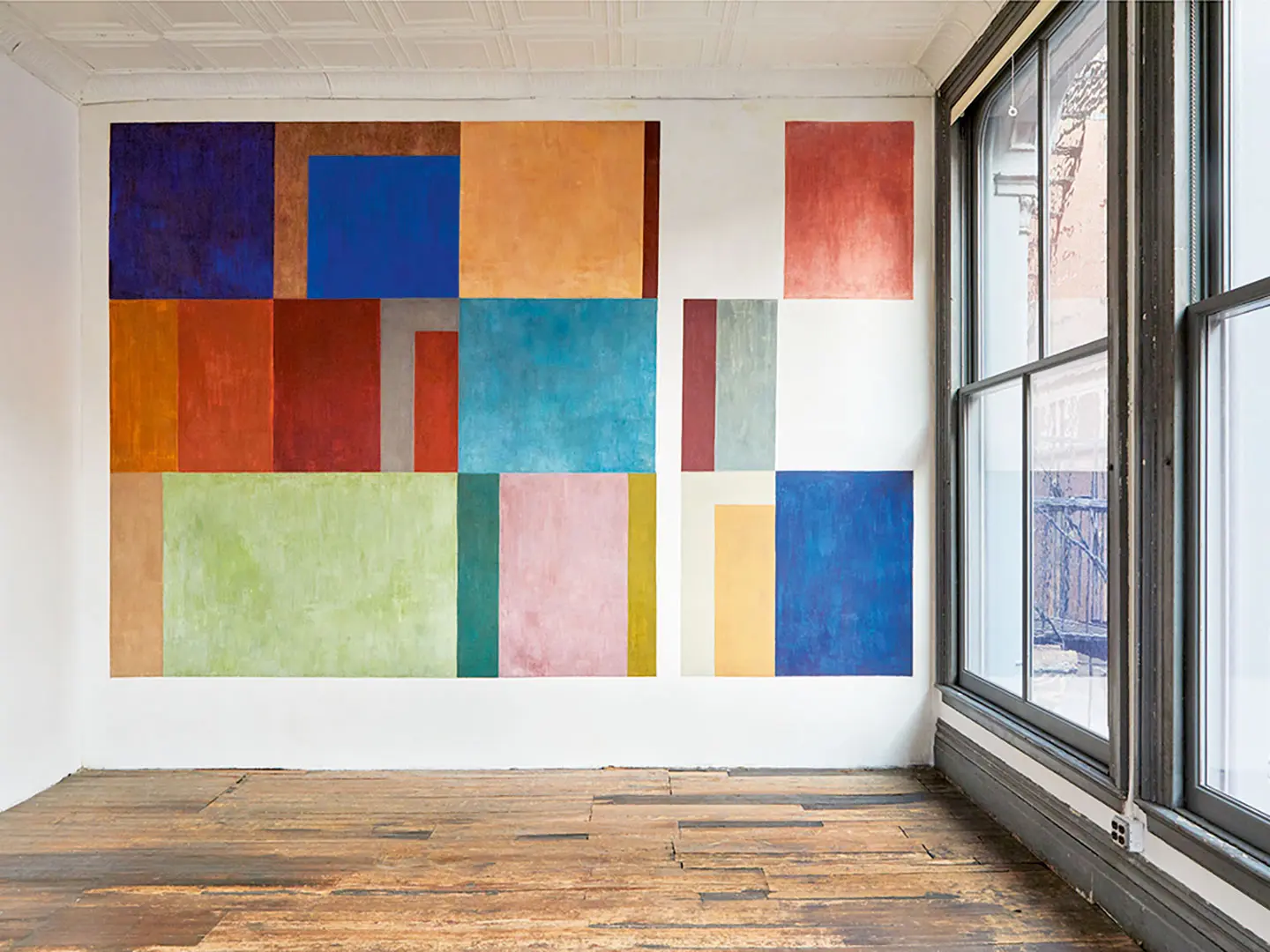
David Novros, no title / 101 Spring Street, 1970, 2nd floor, 101 Spring Street, Judd Foundation, New York. Photo © Kelly Marshall.
Judd had started designing his own furniture for his houses, partly to achieve the highest level of overall cohesion and partly – as he said himself – because he could not afford to buy the costly pieces he would have wanted. Some of the pieces in the Manhattan building, the bed on the fifth floor for example, are among his early experiments. The building stands as a total, composite work of art, home to more than a thousand individual artworks and is considered one of the first places in which Judd developed his “permanent installation” concept, in which the context and the individual works give meaning to each other through their spatial relations. “Everything from the first was intended to be thoroughly considered and to be permanent,” Judd wrote. “The installation of my work and that of others is contemporary with its creation. The work is not disembodied spatially, socially, temporally as most museums. The space surrounding my work is crucial to it: as much thought has gone into the installation as into a piece itself.” One can imagine a certain sympathy between the early life of the building with its industrious and austere appearance, and the lived-in appearance conferred by the wood, post-restoration. Certainly, the feeling of the space has been revolutionised, channelling total Zen, conferred by the air of emptiness and the marked isolation of the individual pieces of art and furniture
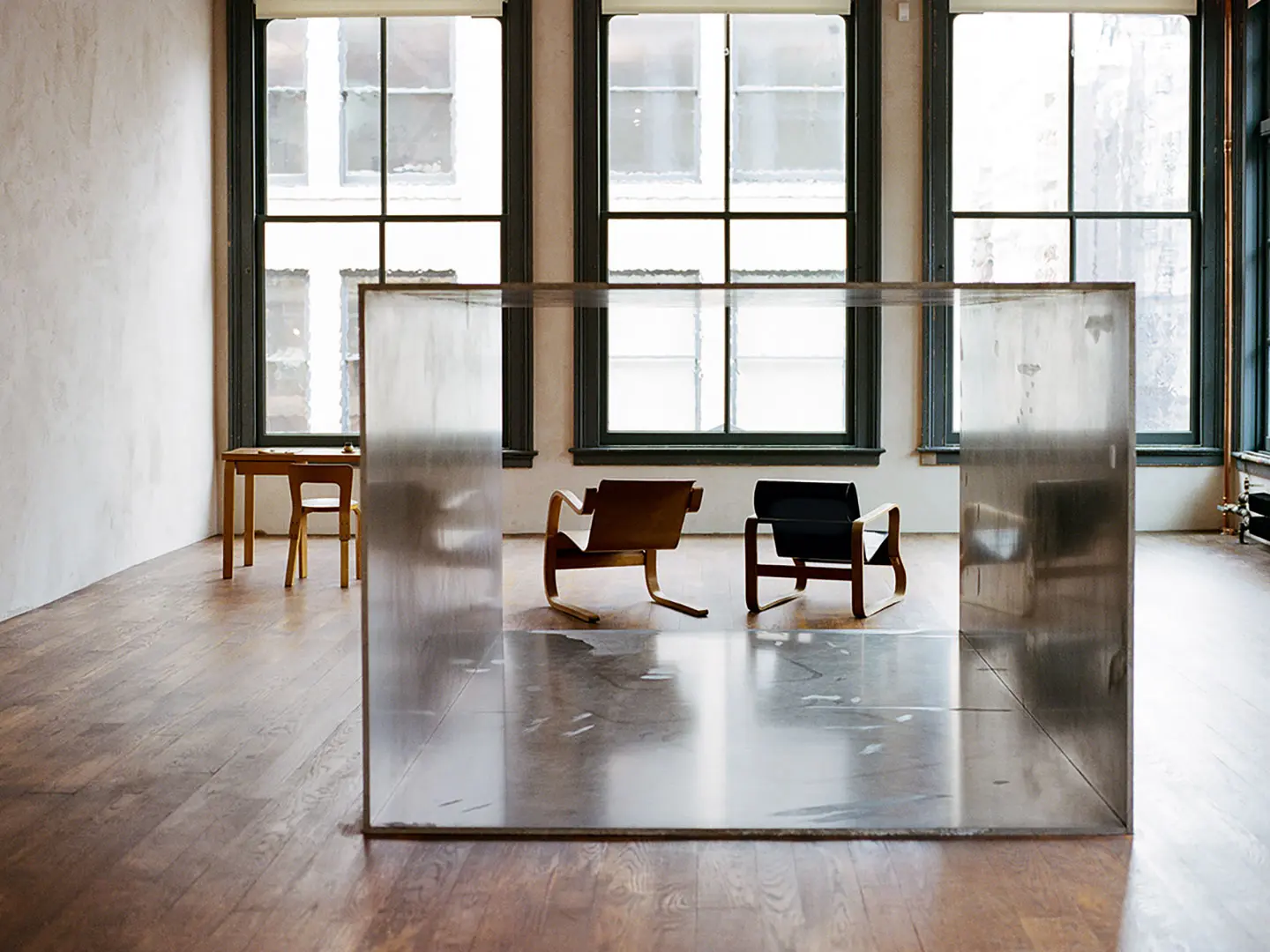
Donald Judd, untitled, 1969 with furniture by Alvar Aalto, 3rd floor, 101 Spring Street, Judd Foundation, New York. Photo Justin Chung © Judd Foundation.
Many of Judd’s works are on show, but there’s an even greater number of works by others. It’s a disparate collection in terms of era, medium, geographical area and style and includes works by Jean Arp, Larry Bell, John Chamberlain, Honoré Daumier, Stuart Davis, Marcel Duchamp, Dan Flavin, David Novros, Claes Oldenburg, Ad Reinhardt, Lucas Samaras, Frank Stella and H.C. Westermann, and furniture by Alvar Aalto, Gerrit Rietveld, Michel Thonet as well as by Judd himself. There are also tribal ceremonial or decorative objects and textiles of varied provenance underscoring the mix of Minimalist and non-European ritual art that was to enjoy such success the world over (see Villa Panza in Varese).
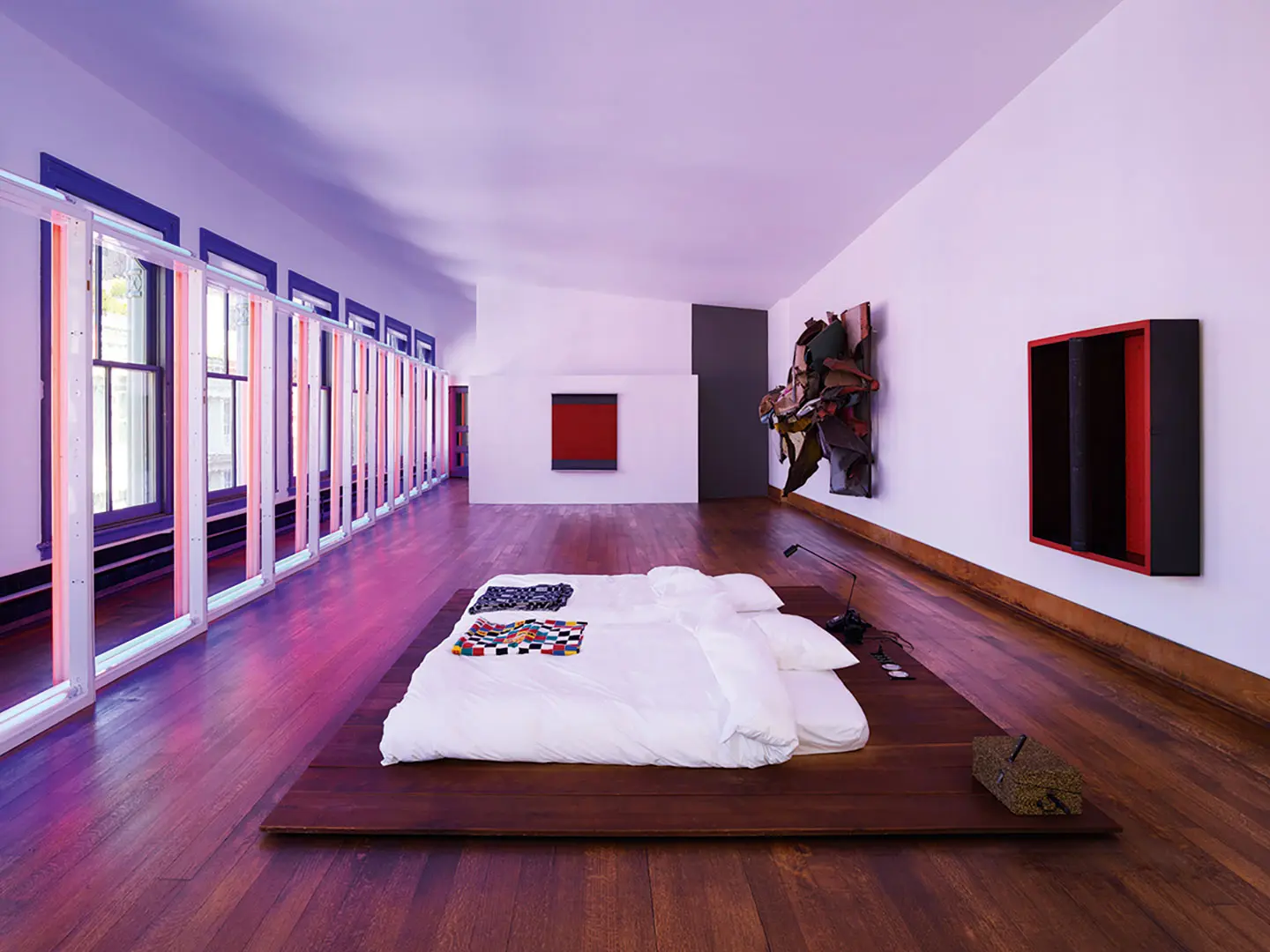
Works by Dan Flavin, Donald Judd, John Chamberlain, and Lucas Samaras with platform bed by Donald Judd, 5th floor, 101 Spring Street, Judd Foundation, New York. Photo Matthew Millman © Judd Foundation.
Copyright:
Donald Judd Art © 2021 Judd Foundation / Artists Rights Society (ARS), New York
Dan Flavin Art © Stephen Flavin / Artists Rights Society (ARS), New York
Art © Estate of Ad Reinhardt / Artists Rights Society (ARS), New York
Art © Lucas Samaras
Art © David Novros / Artists Rights Society (ARS), New York
Art © Frank Stella / Artists Rights Society (ARS), New York
John Chamberlain Art © Fairweather & Fairweather LTD / Artists Rights Society (ARS), New York


 Stories
Stories










